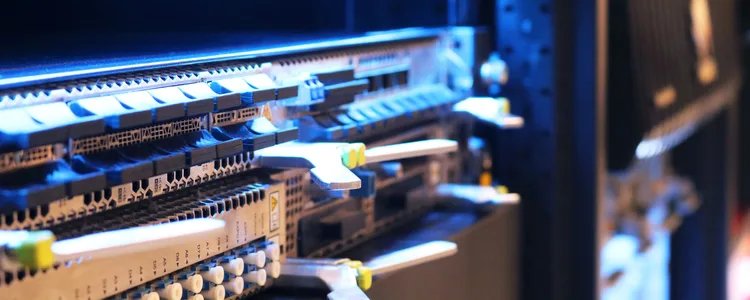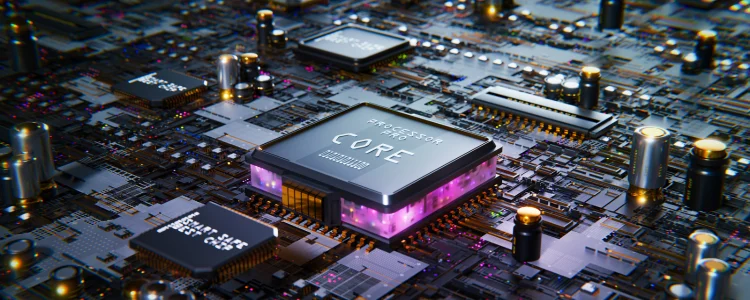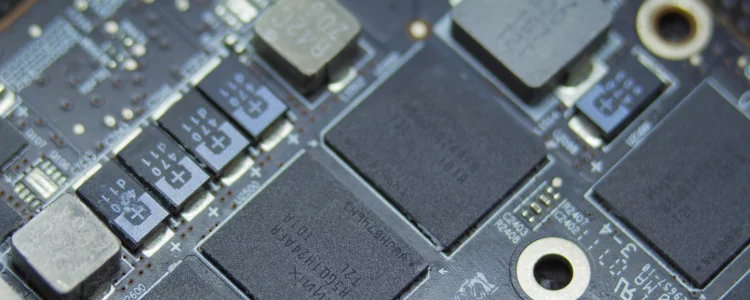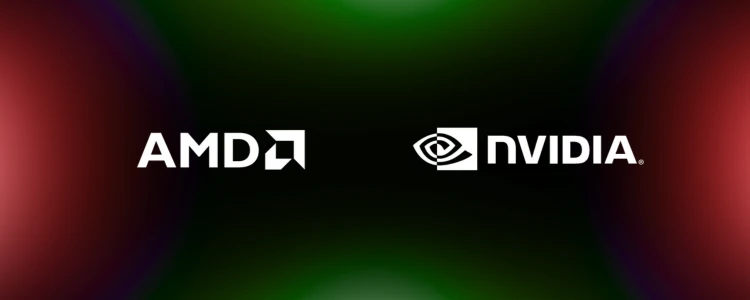AMD vs NVIDIA GPU Comparison: Which is the best GPU for you?

AMD vs NVIDIA: It’s more than just a comparison for your next gaming PC. AI (and everything surrounding it) is already impacting the world in a variety of ways, and it doesn’t look like it’ll be slowing down in the near future.
We’ve been an expert at building, running, and maintaining server infrastructure for over two decades. We know the complexities that come with trying to find the best hardware that fits your needs (and your budget).
But with so many GPU options out there, how do you know when to pick between AMD and NVIDIA? Let’s dive in.
Why GPUs are So Vital for Modern Server Infrastructure
In recent years, GPUs have become an incredibly important part of server infrastructure, mainly due to how relevant parallel processing has become. While GPUs have always been a big part of consumer computers (mainly for playing games or video editing), the rise of AI and other performance demands have made them an important part of business infrastructure too. Let’s check out the three biggest reasons:
AI and Machine Learning: GPUs excel at handling the massive amounts of data and complex computations required for AI and ML tasks. Their ability to perform parallel processing makes them significantly faster than traditional CPUs–instead of processing with up to 64 cores like CPUs, GPUs can have thousands of cores to process these tasks. Companies that are using their own AI servers for tasks like predictive analytics, natural language processing, or image recognition have better overall performance with GPU-accelerated servers.

High Performance Computing (HPC): For HPC tasks, where simulations and complex calculations are the norm, the efficiency of GPUs significantly outweighs CPUs. Industries like finance, healthcare, and scientific research see massive benefits from the better performance that GPUs offer in these areas.
Virtualization: The boom in cloud services has also seen GPUs playing an important role. They help in efficiently managing multiple virtual machines while providing the power needed for graphics-intensive applications, resulting in better resource utilization and smoother performance overall.
When picking between GPUs for server infrastructure, it’s important to match the right one to the tasks your server will be performing. Both AMD and Nvida are the biggest players in the market, each with their own proprietary hardware and design philosophy, which can make it difficult to know which to pick for your next GPU server.

AMD GPUs: The Best Bang for Your Buck?
When it comes to server infrastructure, AMD GPUs have made significant strides, positioning themselves as cost-effective (yet still highly capable) solutions for demanding workloads. Known for having some of the best value for most gamers, AMD has also become a popular choice for companies that seek efficiency without compromising performance.
AMD GPU cards are built on the RDNA (Radeon DNA) and CDNA (Compute DNA) architectures. While the RDNA architecture is optimized for gaming and graphics, the CDNA architecture is tailored specifically for compute tasks, making it an ideal choice for server environments focused on AI/ML and HPC. Some of the biggest advantages that AMD offers are:
- High Compute Power: Most AMD GPU cards deliver impressive floating-point performance, with their MI300X nearly doubling throughput compared to Nvidia’s H100.
- Infinity Fabric: This high-bandwidth, low-latency interconnect technology allows incredibly efficient data transfer between an AMD CPU and GPUs, massively improving how multi-GPU setups can scale.
- Radeon Open Compute (ROCm): AMD’s open-source platform offers a powerful environment for AI/ML development, with support for major frameworks like TensorFlow and PyTorch.
- Competitive Pricing: An AMD GPU often comes at a lower cost compared to NVIDIA, providing a cost-effective solution without compromising on performance.

Choosing AMD GPUs for your server infrastructure can bring several advantages, such as:
- Better Price-to-Performance Ratio: AMD is known for it’s competitive pricing, offering solid performance without a steep price tag. This makes them a reasonable alternative for companies that want to maximize their investment and get a better value for their budget.
- Open Ecosystem: AMD’s support for an open development ecosystem through ROCm allows for better flexibility and customization, enabling developers to tailor optimizations that proprietary solutions might not easily allow. Additionally, AMD offers native Linux support, where NVIDIA tends to fall flat.
- Power Efficiency: AMD’s architectures are designed to deliver high performance per watt, leading to lower energy consumption overall. Though at the higher end of server GPUs, NVIDIA ends up being better in terms of overall efficiency
Including AMD GPUs into your server setup can be a great solution for businesses focused on delivering high-performance AI/ML solutions at an affordable price. These GPUs offer a blend of efficiency, performance, and adaptability–all backed by a strong community of developers and open source support. When cost-effectiveness and strong performance are both essential, AMD cards offer a great option for any server.

NVIDIA GPUs: Worth The Price Tag
NVIDIA has long been a powerhouse in the GPU market, consistently delivering cutting-edge solutions tailored for high-demand server environments, and some of the fastest GPU models for demanding games. They’re a powerhouse within the AI sphere, with some NVIDIA cards setting benchmarks for what’s possible in computational efficiency and scalability.
At the core of NVIDIA’s dominance is their architecture. NVIDIA GPUs are build on the CUDA (Compute Unified Device Architecture) platform, which provides a powerful and scalable computing framework. This architecture takes advantage of thousands of CUDA cores to handle complex computations, making it an exceptional choice for AI/ML workloads. They also come with Tensor Cores, which are specifically designed to accelerate matrix options used in deep learning tasks, giving significant boosts in performance and efficiency.
Some key features that make NVIDIA GPUs stand out include:
- The CUDA Platform: This extensive software ecosystem enables developers to optimize and scale their applications effectively, taking full advantage of an NVIDIA card.
- Tensor Cores: These specialized processing units accelerate deep learning model training and inferencing, significantly improving throughput and reducing time-to-results for AI projects like Stable Diffusion.
- NVLink: Similar to AMD’s Infinity Fabric, this allows for seamless communication between GPUs, ensuring data transfers are fast and efficient, which is crucial for multi-GPU setups.
- AI-Optimized Libraries: NVIDIA provides their own suite of libraries (like cuDNN and TensorRT), which can streamline and enhance workflows., making it easier for developers to deploy high-performance AI applications.
Using a GPU from “Team Green” in your server infrastructure comes with several upsides, like:
- Performance: NVIDIA’s GPUs consistently deliver top-tier performance, handling minute computations and large-scale data processing with ease. Paired with NVIDIA RTX technology, this performance edge is critical for companies aiming to push the boundaries of what AI/ML can do.
- Mature Ecosystem: The ecosystem around NVIDIA cards, including the excellent support from deep learning frameworks like TensorFlow and PyTorch, helps ensure developers always have the tools they need to optimize and deploy their models effectively.
- Community and Support: While they aren’t as forward-thinking with open source software as AMD, NVIDIA does have a large developer community and they provide extensive resources to help teams and projects thrive.
Investing in an NVIDIA card, despite their higher cost, can be an excellent choice for businesses that are focused on advanced AI/ML projects. These GPUs not only offer unparalleled performance and efficiency, but also come with a well-established ecosystem that supports businesses (and projects) of any level, making it tough not to recommend NVIDIA.

Things to Consider When Choosing Between AMD and NVIDIA GPUs
Performance
Performance is often the first thing most consumers consider when choosing a GPU. Both AMD and NVIDIA have made a huge impact in what their hardware can do, though in different ways.
- NVIDIA: NVIDIA’s hardware is well-known for their powerful performance, especially in AI, deep learning, and HPC tasks. With their CUDA cores, Team Green excels at parallel processing and can handle complex computation with ease. Additionally, NVIDIA provides specialized hardware like Tensor Cores and RT Cores in their professional and data center line-up, which can significantly boost performance in specific applications like neural network training and real-time ray tracing.
- AMD: AMD, on the other hand, takes advantage of their RDNA and CDNA architectures to deliver high performance in both gaming and and professional workloads. Their MI-series accelerators are particularly strong in computational tasks and offer solid performance for AI/ML workloads. AMD cards also often come with more VRAM at a lower price point, which can be an advantage for specific applications that require large memory bandwidth (like large-scale data analysis or complex simulations). Their GPUs also excel in floating-point computations, which are critical for scientific and engineering applications.
Software Ecosystem and Compatibility
The ecosystem surrounding your GPU can make all the difference on how it’s integrated and utilized by your software (and other server hardware).
- NVIDIA: Their CUDA platform is a well-established ecosystem that supports a wide range of applications and frameworks. CUDA is a parallel computing platform and programming model that makes using GPUs for general-purpose computing fairly simple. For deep learning, NVIDIA cards are commonly used with TensorFlow, PyTorch, and other popular AI/ML frameworks, offering extensive community support and resources. Plus, they offer their own development tools with cuDNN and TensorRT to help further streamline deployment and optimization processes.
- AMD: Team Red’s ROCm platform is the centrepiece of their software ecosystem. It’s open source, which means it also comes with a passionate and innovative community. Plus, they support the same AI/ML libraries that NVIDIA does, making them a great alternative at a lower price. AMD hardware also offers OpenCL, allowing developers to work with multiple programming languages, where NVIDIA only supports C++.

Power Efficiency and Thermal Management
With the increased demand for power (mostly due to the rise of AI), efficiency is crucial for keeping costs manageable and staying environmentally conscious.
- NVIDIA: NVIDIA designs their GPUs with power efficiency in mind, including features like Dynamic Boost and advanced cooling mechanisms. These features optimize power usage by adjusting power distribution while reducing overall energy consumption. Their advanced thermal designs also ensure that GPUs can maintain high performance without overheating, which can be critical for reducing cooling costs and maintaining reliability in data centers.
- AMD: AMD also emphasizes energy efficiency within their architectures too, and has been slowly outperforming the competition. Their Infinity Fabric interconnect technology allows for efficient communication between an AMD CPU and GPUs, optimizing power usage across the entire server. The average AMD GPU also tends to operate at lower power envelopes too, which can give them the advantage in managing thermal output and maintaining system stability under heavy loads.

The Wrap-Up: Team Green, Or Team Red?
Picking between the two titans of GPUs isn’t always a clear choice. Beyond just trying to play new games with ultra settings, GPUs are an essential part of modern computing, and these technologies are far more complex than you may think.
While there’s no clear winner for AMD vs NVIDIA, there’s at least a few things you can walk away with:
- NVIDIA offers some of the best hardware on the market, though at a higher price and worse power efficiency.
- AMD brings an amazing price-to-performance ratio, as well as broader support for their hardware and new technologies.
No matter which one you pick, we can help you get your business up and running with the hardware you need. Contact us today to get started!
Was this page helpful?

